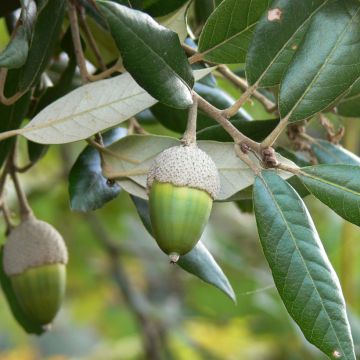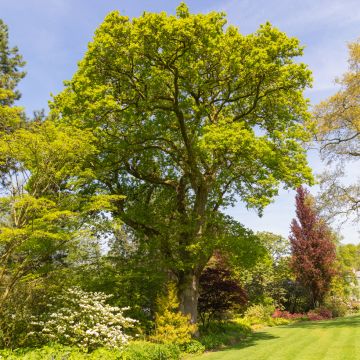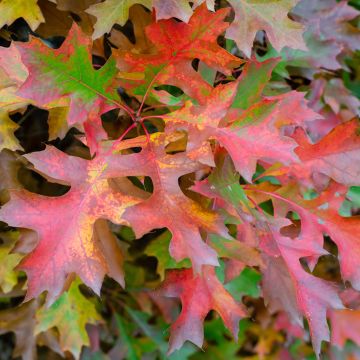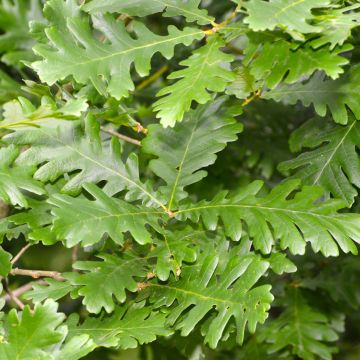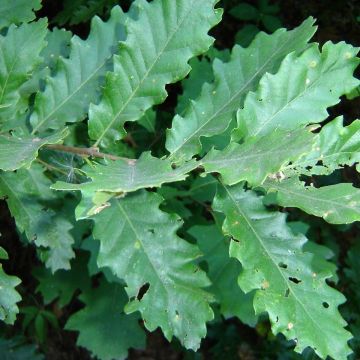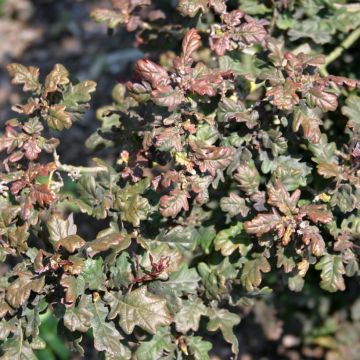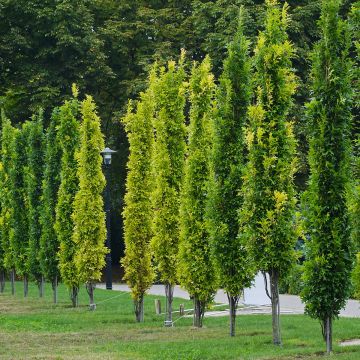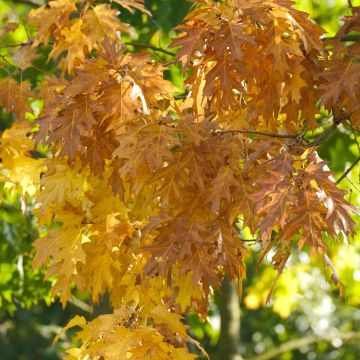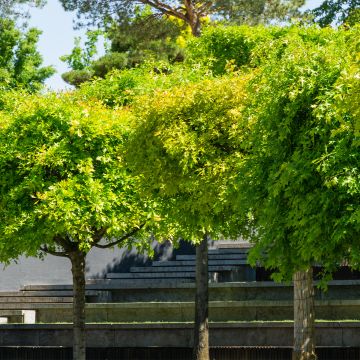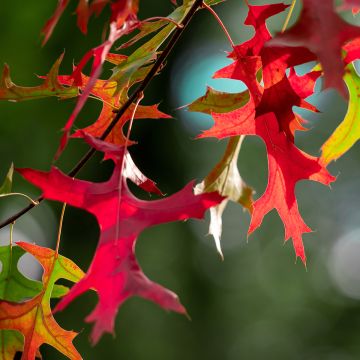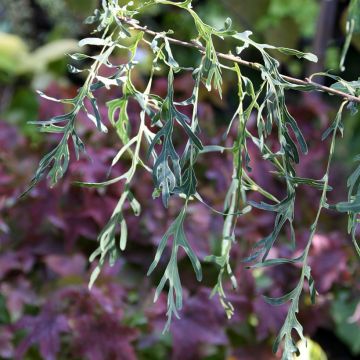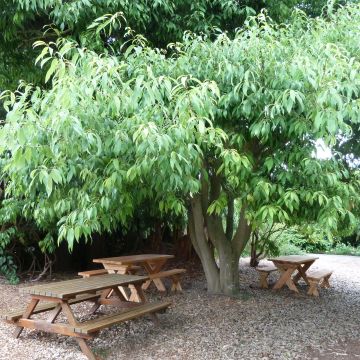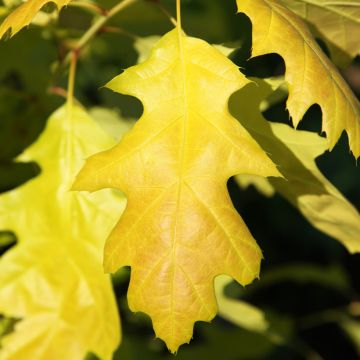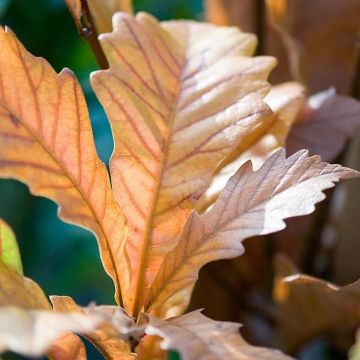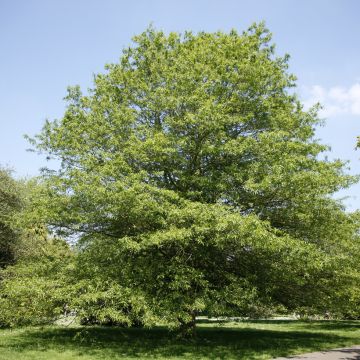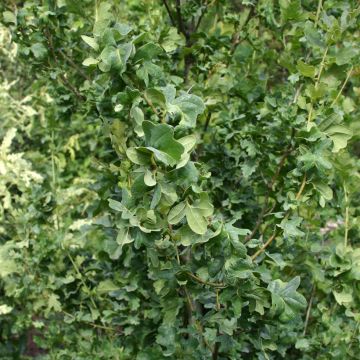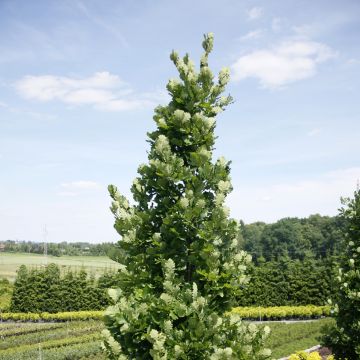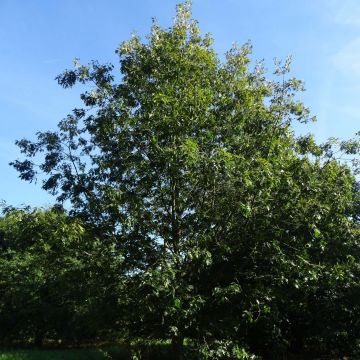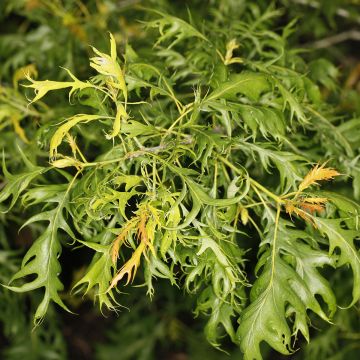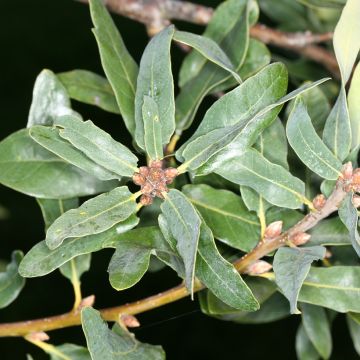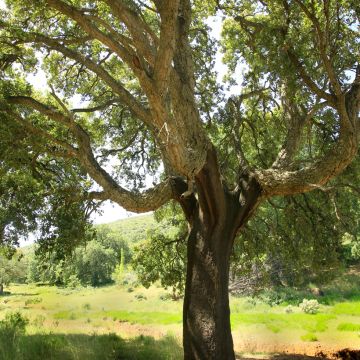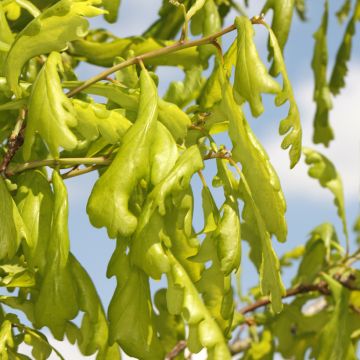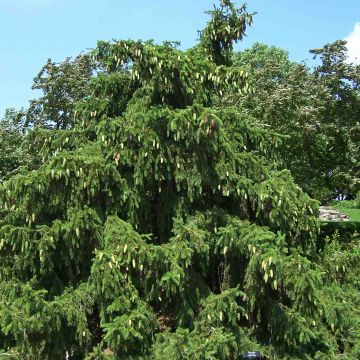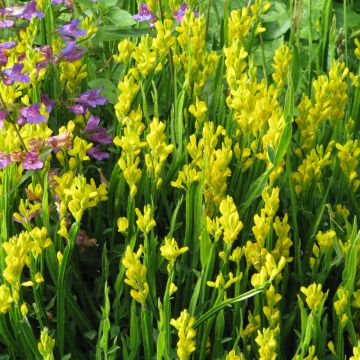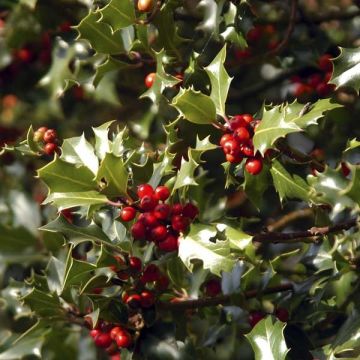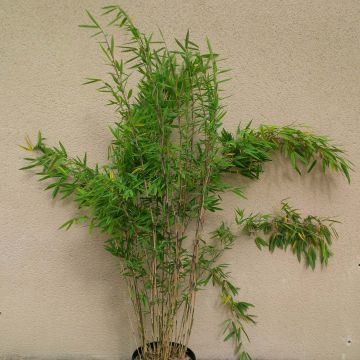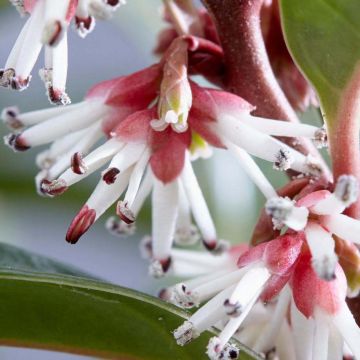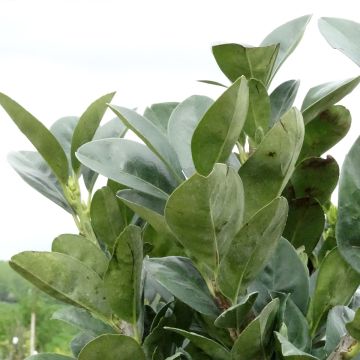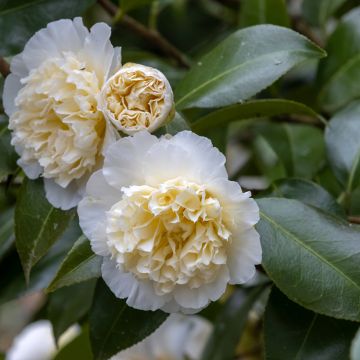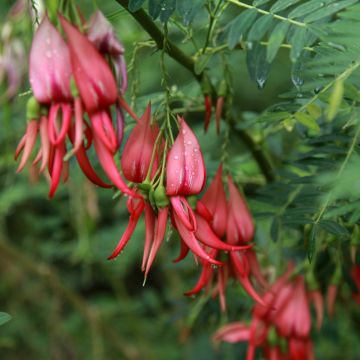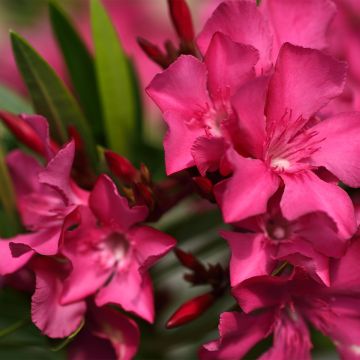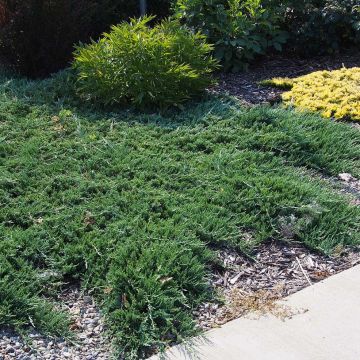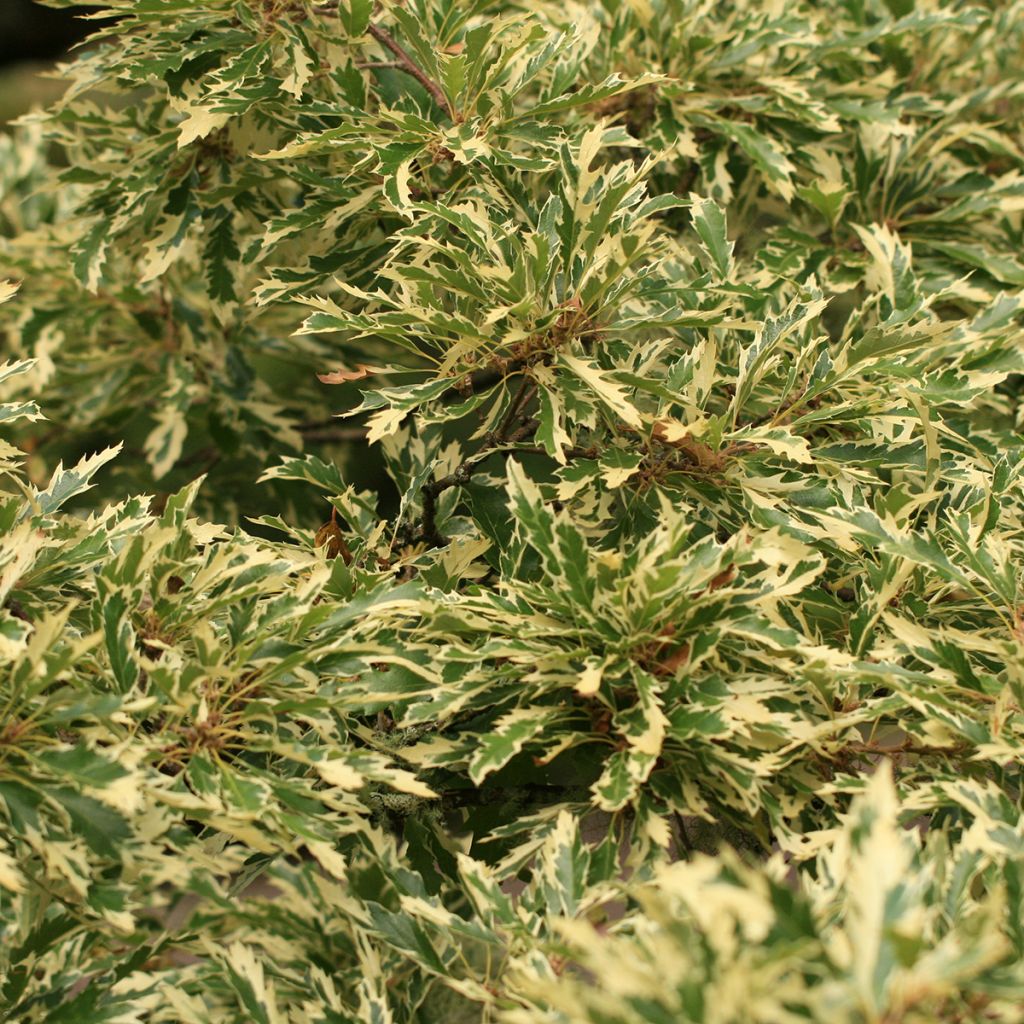

Quercus cerris Argenteovariegata - Turkey oak
Quercus cerris Argenteovariegata - Turkey oak
Quercus cerris Argenteovariegata
Turkey oak
Why not try an alternative variety in stock?
View all →This plant carries a 24 months recovery warranty
More information
We guarantee the quality of our plants for a full growing cycle, and will replace at our expense any plant that fails to recover under normal climatic and planting conditions.
From €5.90 for pickup delivery and €6.90 for home delivery
Express home delivery from €8.90.
Does this plant fit my garden?
Set up your Plantfit profile →
Description
The Quercus cerris Argenteovariegata is a rare variety of Hairy Oak, easily recognizable by its very original and bright foliage. The leaves are very irregularly and relatively deeply toothed, and the green is mixed with cream white to form a pattern unique to each leaf. With smaller dimensions much more suitable for gardens than the species, this variegated variety also grows more slowly. Over time, it forms a beautiful tree with a rounded crown, as wide as it is tall. Growing in sunny exposure, it tolerates partial shade and limestone soils as well as growing in coastal areas.
The Hairy Oak belongs to the Fagaceae family, like the Beech and the Chestnut. It is native to southeastern Europe and is widespread from the Balkan Peninsula to the western shore of the Black Sea and central Europe. It is a species of warm temperate climate that appreciates limestone soils, but not prolonged droughts. The botanical species, with rapid growth, reaches an average height of 20m with a spread of 10-12m but shows a very variable habit, more or less spreading and irregular. This oak develops a crown that is widely conical and becomes rounded over time. It is not uncommon for its main branch to rise and extend to the top, taking over from the trunk by branching into robust branches that will form the crown. The trunk is covered with rough and channelled bark, fragmented into long plates.
The Argenteovariegata variety has a more limited growth than the species, and also slower. With a pyramidal to conical shape, the more or less irregular silhouette eventually rounds out to give a beautiful tree as wide as it is tall, about 10m in all directions. However, you will need to be patient because, like all variegated plants, this Oak grows more slowly than the green-leaved species, which thus has a significantly larger photosynthetic surface area (the white parts of the leaves do not contain the chlorophyll necessary for photosynthesis).
The 8 to 10 cm long leaves are quite narrow and have very irregular toothed edges, with the leaf showing irregular indentations, occasionally doubly toothed. They are relatively dark green with some lighter parts and edged with cream white. Sometimes with a simple border, often asymmetrical, the white surface can also occupy a large part of the leaf. Each leaf therefore has a unique pattern, which gives a very dynamic and bright aspect to the vegetation. In autumn, the foliage turns brownish yellow, remaining attached to the branches for a long time before falling.
The flowering in May, is yellow and quite discreet. This Oak is recognized by the curious appearance of its fruits: the majority of the acorns are enclosed in a hemispherical cupule, densely covered with long frizzled scales, curved backwards, and covered with grey felting. The large, elongated acorns, measure 2.5 to 4 cm long and 2 cm wide. They are solitary or grouped in 2 to 4, orange at the base and brown-green at their tip.
The taproot of this Oak is deep and powerful thus ensuring a solid and lasting grip in the deep soils it appreciates. It prefers limestone but will grow in most soils, except for those that are too acidic and tolerates proximity to the seaside. It prefers sunny exposures but can tolerate light shade, which it will brighten with its superb foliage. It is hardy and can withstand frosts down to -25°C, although these can sometimes crack its bark.
The Hairy Oak is a tolerant species that adapts to most regions, as long as it is planted in sufficiently deep and not too dry soil. Its variegated variety is still rare in our gardens and deserves to be used more. You can plant it alone on a lawn to highlight its exceptional foliage or in a bed with other colourful plants. Cotinus Grace will be a perfect companion. This variety of Smoke Bush is attractive with its foliage that contrasts all year round with that of the Oak, both in itsovate shape and its changing colours, ranging from purple to bright red in autumn. An airy flowering in summer will further enrich your scene. Another plant with decorative foliage, Cercis canadensis Golden Falls is a Canadian Redbud that surprises with its narrow weeping habit. Its heart-shaped leaves have a pattern that contrasts well with those of the Oak, while their colour, changing from orange to golden yellow and lemon green, creates a sensation alongside the purple of the Cotinus and the cream-variegated green of the Hairy Oak. Not to mention its magnificent pink flowering in spring...
Report an error about the product description
Plant habit
Flowering
Foliage
Botanical data
Quercus
cerris
Argenteovariegata
Fagaceae
Turkey oak
Cultivar or hybrid
Other Oak
Planting and care
Quercus cerris Argenteovariegata is best planted in autumn or spring, outside the freezing period. It prefers deep, fertile soils, not too dry in summer, slightly acidic, neutral or chalky. It dislikes shallow rocky or excessively acidic soils. It prefers sunny and open exposures, but can also grow under light shade. Well adapted to the seaside, it appreciates humid atmospheres and withstands sea spray. Prepare a planting hole 60 cm on each side and deep to loosen the soil well. Soak the root ball in a bucket of water for fifteen minutes before planting, then water abundantly. Protect it from excessively dry summers in the years following planting and water regularly. It is a tree that, once established, requires very little maintenance. It is particularly resistant to diseases and parasites.
Planting period
Intended location
Care
This item has not been reviewed yet - be the first to leave a review about it.
Evergreen shrubs
Haven't found what you were looking for?
Hardiness is the lowest winter temperature a plant can endure without suffering serious damage or even dying. However, hardiness is affected by location (a sheltered area, such as a patio), protection (winter cover) and soil type (hardiness is improved by well-drained soil).

Photo Sharing Terms & Conditions
In order to encourage gardeners to interact and share their experiences, Promesse de fleurs offers various media enabling content to be uploaded onto its Site - in particular via the ‘Photo sharing’ module.
The User agrees to refrain from:
- Posting any content that is illegal, prejudicial, insulting, racist, inciteful to hatred, revisionist, contrary to public decency, that infringes on privacy or on the privacy rights of third parties, in particular the publicity rights of persons and goods, intellectual property rights, or the right to privacy.
- Submitting content on behalf of a third party;
- Impersonate the identity of a third party and/or publish any personal information about a third party;
In general, the User undertakes to refrain from any unethical behaviour.
All Content (in particular text, comments, files, images, photos, videos, creative works, etc.), which may be subject to property or intellectual property rights, image or other private rights, shall remain the property of the User, subject to the limited rights granted by the terms of the licence granted by Promesse de fleurs as stated below. Users are at liberty to publish or not to publish such Content on the Site, notably via the ‘Photo Sharing’ facility, and accept that this Content shall be made public and freely accessible, notably on the Internet.
Users further acknowledge, undertake to have ,and guarantee that they hold all necessary rights and permissions to publish such material on the Site, in particular with regard to the legislation in force pertaining to any privacy, property, intellectual property, image, or contractual rights, or rights of any other nature. By publishing such Content on the Site, Users acknowledge accepting full liability as publishers of the Content within the meaning of the law, and grant Promesse de fleurs, free of charge, an inclusive, worldwide licence for the said Content for the entire duration of its publication, including all reproduction, representation, up/downloading, displaying, performing, transmission, and storage rights.
Users also grant permission for their name to be linked to the Content and accept that this link may not always be made available.
By engaging in posting material, Users consent to their Content becoming automatically accessible on the Internet, in particular on other sites and/or blogs and/or web pages of the Promesse de fleurs site, including in particular social pages and the Promesse de fleurs catalogue.
Users may secure the removal of entrusted content free of charge by issuing a simple request via our contact form.
The flowering period indicated on our website applies to countries and regions located in USDA zone 8 (France, the United Kingdom, Ireland, the Netherlands, etc.)
It will vary according to where you live:
- In zones 9 to 10 (Italy, Spain, Greece, etc.), flowering will occur about 2 to 4 weeks earlier.
- In zones 6 to 7 (Germany, Poland, Slovenia, and lower mountainous regions), flowering will be delayed by 2 to 3 weeks.
- In zone 5 (Central Europe, Scandinavia), blooming will be delayed by 3 to 5 weeks.
In temperate climates, pruning of spring-flowering shrubs (forsythia, spireas, etc.) should be done just after flowering.
Pruning of summer-flowering shrubs (Indian Lilac, Perovskia, etc.) can be done in winter or spring.
In cold regions as well as with frost-sensitive plants, avoid pruning too early when severe frosts may still occur.
The planting period indicated on our website applies to countries and regions located in USDA zone 8 (France, United Kingdom, Ireland, Netherlands).
It will vary according to where you live:
- In Mediterranean zones (Marseille, Madrid, Milan, etc.), autumn and winter are the best planting periods.
- In continental zones (Strasbourg, Munich, Vienna, etc.), delay planting by 2 to 3 weeks in spring and bring it forward by 2 to 4 weeks in autumn.
- In mountainous regions (the Alps, Pyrenees, Carpathians, etc.), it is best to plant in late spring (May-June) or late summer (August-September).
The harvesting period indicated on our website applies to countries and regions in USDA zone 8 (France, England, Ireland, the Netherlands).
In colder areas (Scandinavia, Poland, Austria...) fruit and vegetable harvests are likely to be delayed by 3-4 weeks.
In warmer areas (Italy, Spain, Greece, etc.), harvesting will probably take place earlier, depending on weather conditions.
The sowing periods indicated on our website apply to countries and regions within USDA Zone 8 (France, UK, Ireland, Netherlands).
In colder areas (Scandinavia, Poland, Austria...), delay any outdoor sowing by 3-4 weeks, or sow under glass.
In warmer climes (Italy, Spain, Greece, etc.), bring outdoor sowing forward by a few weeks.

































